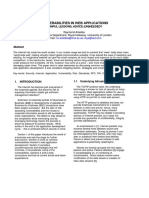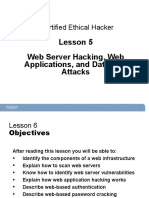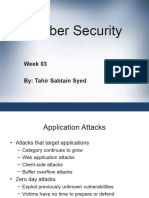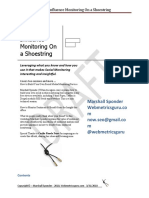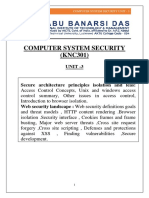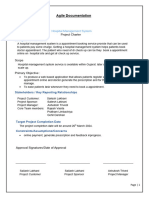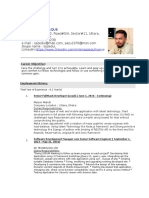0% found this document useful (0 votes)
19 views50 pagesTopic 5 - Web Application Security
The document discusses web application security, highlighting vulnerabilities, attack methods, and security techniques. It explains how web servers operate, common attack vectors like SQL injection and cross-site scripting (XSS), and the importance of input validation. Additionally, it provides security measures to protect web applications and servers from potential threats.
Uploaded by
otienosamuel12831Copyright
© © All Rights Reserved
We take content rights seriously. If you suspect this is your content, claim it here.
Available Formats
Download as PDF, TXT or read online on Scribd
0% found this document useful (0 votes)
19 views50 pagesTopic 5 - Web Application Security
The document discusses web application security, highlighting vulnerabilities, attack methods, and security techniques. It explains how web servers operate, common attack vectors like SQL injection and cross-site scripting (XSS), and the importance of input validation. Additionally, it provides security measures to protect web applications and servers from potential threats.
Uploaded by
otienosamuel12831Copyright
© © All Rights Reserved
We take content rights seriously. If you suspect this is your content, claim it here.
Available Formats
Download as PDF, TXT or read online on Scribd
/ 50










